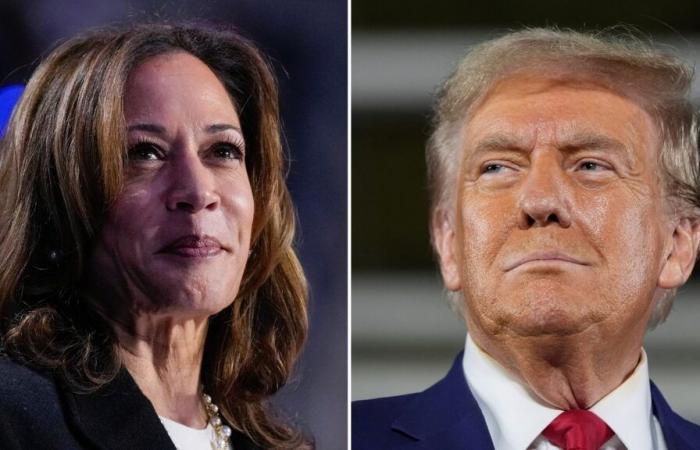Republican candidate, former president Donald Trump and vice-president, Democrat Kamala Harris, are holding competing rallies in the final leg of the United States presidential election campaign. Whoever wins the race to become the 47th president of the US will not be elected by popular vote but by an indirect election system called the Electoral College. This indirect election system is one of the most unique features of the world’s oldest modern democracy.
Electoral College: How Americans vote
The Electoral College comprises a group of delegates from each US state, who then choose the next US president based on their party affiliation. When an average American votes in a US presidential election on November 5, they vote to elect these delegates in their respective state, who have the final say in choosing the next US president.
Catch all the newsmakers, detailed explainers and deep analysis of the US. Elections here
Each state has a specific number of electoral college votes—two votes from the two members representing the state in the US Senate + the number of delegates equal to its representation in the House of Representatives. A candidate aspiring to become the next US president needs an absolute majority of 270 or more votes out of 538 electoral college votes.
Winner takes all
Each state in the US has a specified number of electoral college votes. The College follows a winner-takes-all rule for the popular vote, giving the first candidate past simple majority all that state’s electoral votes.
This indirect election system has created a strange situation in which a candidate can become the US president by securing enough electoral college votes without securing enough popular votes from the American people.
The most recent case is Trump’s victory in the 2016 US presidential elections. Despite his rival, Democrat Hilary Clinton, securing nearly three million popular votes, Trump managed to win 306 electoral college votes. The republican also won crucial states with the most electoral college votes – Texas (38), Florida (29), Pennsylvania (20), Ohio (18), Michigan (16), Georgia (16), North Carolina (15), Arizona (16) and Wisconsin (10). Trump described his victory as “beautiful”.
Aspiring presidential candidates also focus on states called “swing states” or “battleground states”. These are states where either Democratic or Republican candidate could plausibly win in a statewide election. These states have a large number of electoral votes, which can ultimately decide the next US president. Seven states are considered to be “battleground states” in this year’s election – Pennsylvania (19), Nevada (6), North Carolina (16), Georgia (16), Arizona (11), Michigan (15) and Wisconsin (10).
Electors from the college will gather in their state capitals on December 17 and cast votes for the next US president and US vice president. On January 6, 2025, the US Congress will convene to certify the winner, and on January 20, the new president will be sworn in.
Why the Electoral College?
The US Constitution established the system and the rules for indirect, single-round presidential elections in 1787. The country’s founders saw the system as a compromise between direct presidential elections with universal adult suffrage and an indirect election by members of the US Congress.
Alexander Hamilton, one of the country’s founding fathers, endorsed the system in 1788, saying the system guaranteed that a US president would be of “characters pre-eminent for ability and virtue” and not merely adept with “the little arts of popularity”.
Timing of US election
Polling in the US will begin on November 5 between 7 am and 9 am local time. As the country has multiple time zones, this roughly falls between 5.30 pm and 7.30 pm in India.
Most polling stations in the US close between 7 pm and 11 pm Eastern Standard Time (EST) on November 5, which falls between 5.30 am and 9.30 am in India on Wednesday, November 6.
Voting in battleground states will also close between 7 pm and 11 pm Eastern Standard Time. These seven states are Pennsylvania, Nevada, North Carolina, Georgia, Arizona, Michigan and Wisconsin.
When to expect results?
Results are expected to come in as soon as polling closes at local time in respective states. According to an Al Jazeera report, several states in the Western part of the US will continue to vote while results in the eastern states start coming in.
According to Al Jazeerathe battleground states will start reporting results as soon as voting concludes at 7 pm EST. Some of the key states are mentioned below.
Pennsylvania: The state does not allow counting mail ballots until election day. Hence, results are not expected on election night. In 2020, the state did not have a clear winner for four days after polling.
Georgia: State law requires all early votes to be counted and reported by 8 pm EST, which is 6.30 am in India on November 6.
North Carolina: Votes are expected to be counted throughout the evening on November 5, and complete results are expected only by midnight. This roughly translated to 10.30 am in India on November 6.
Nevada: This state accepts mail ballots that arrive late; hence, it is highly unlikely that results will be released on the same night. In the 2020 elections, the results were announced days after polling.






